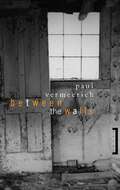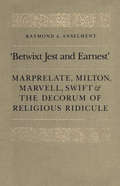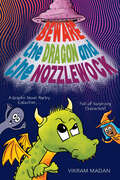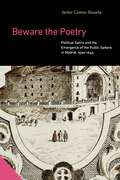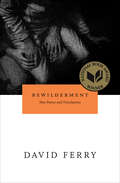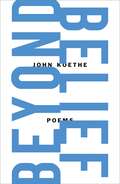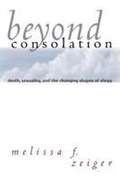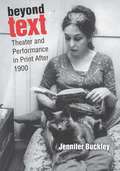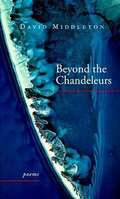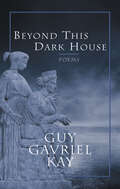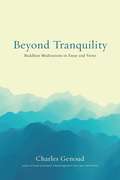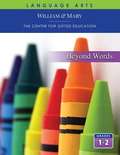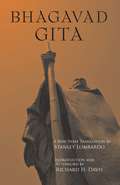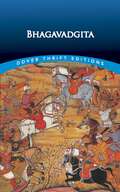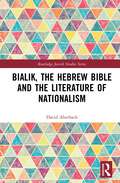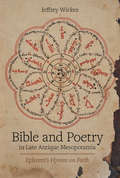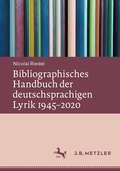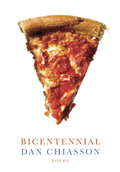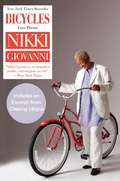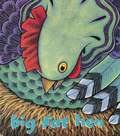- Table View
- List View
Between the Walls
by Paul VermeerschPaul Vermeersch examines the forces that divide us and isolate us as individuals in both the natural and man-made worlds, at the moments when those worlds intersect, and in the places where we live and work. During a violent row between teenage boys, a starling explodes like a hand grenade. A clutter of inbred cats plays out the rise and fall of mankind in a secluded country barn. While driving his girlfriend home, a young man is forced to alter the course of his future by the sudden appearance of a plague of toads. And in the harrowing final sequence, we are taken on a tour through a fragile city verging on its own ruin. As fantastic as they are visceral, these poems shed new light on our darkest corners and take us deep between the walls, those that are thrust up before us as well as those of our own making.
Betwixt Jest and Earnest: Marprelate, Milton, Marvell, Swift & the Decorum of Religious Ridicule
by Raymond A. AnselmentMarprelate, Milton, Marvell, and Swift are among the best prose satirists in a remarkably rich literary era. Focusing on these key figures, 'Betwixt Jest and Earnest' examines the theory and practice of religious prose in the sixteenth and seventeenth centuries. Recognizing the difficulties inherent in attempting to transform unimaginative animadversion into effective satire, it analyses the ways in which Marprelate's tracts, Milton's anti-prelatical satires, Marvell's The Rehearsal Transpros'd, and Swift's A Tale of a Tub variously resolve the decorum of religious satire. Although the study is not specifically an intellectual history or a rigid definition of religious attitudes towards jest, it does bring together basic symptoms of altering sensibilities in the period. Marprelate, Milton, Marvell, and Swift represent diverse religious dispositions, but they share a similar satiric vision. Each recognizes the central importance of manner, and all develop dramatic satire heavily dependent on character, an emphasis which often displaces the immediate issues contested, but never obscures the larger concerns the satirists pursue. Their preoccupations with the nature of tradition, their emphasis on the self, and their sensitivity to language reflect similar involvements in questions of certainty and absolutism. The virtues and abuses they find in such central questions are not unique to them or their time, but their emphases are, for they wrote in an age in which sensitive men could confront revolution and reaction with an assurance not easily attainable once that era had passed.
Beware the Dragon and the Nozzlewock: A Graphic Novel Poetry Collection Full of Surprising Characters!
by Vikram MadanPerfect for fans of Jack Prelutsky and Shel Silverstein, award-winning author Vikram Madan&’s new poetry collection features delicious vocabulary, hilarious poems, and a full-color graphic novel format!Vikram Madan packs this whimsical poetry collection with surprise twist after surprise twist and a host of unusual characters. In these pages, you&’ll meet ghost guppies (and the brave girl who creates them), Stan the Slouching Man™ who&’ll teach you blackbelt slouching, oozing dinosaurs called squishosaurs, a suspicious dragon, and the Nozzlewock (a nose with super-vacuum strength), among many other memorable heroes. Recurring characters and subplots in the art weave the poems together, adding to the merriment. This quirky collection in full-color graphic novel format begs to be read over and over again.
Beware the Poetry: Political Satire and the Emergence of a Public Sphere in Madrid, 1595–1643 (Interactions in the Early Modern Age)
by Javier Castro-IbasetaIn the early seventeenth century, Spanish rulers were confronted by an avalanche of political satires. Beware the Poetry shows how these poetic libels helped articulate an early form of the public sphere, profoundly transforming political culture.Exploring a rich trove of mostly anonymous satirical works, together with newsletters, sermons, and plays, Javier Castro-Ibaseta reconstructs the experiences of Madrilenians during the reigns of Philip III and Philip IV. Castro-Ibaseta proposes an original theory of political publics that corrects approaches that assume early modern Spain’s public sphere mirrored the politics of England or France. Instead, he shows that in Spain publicness was distinct because the satires—about the king’s favorite, and even about the king himself—were consumed for pleasure and entertainment. They did not create political communities or stir rebellious movements. Read diachronically, the long, continuous, evolving collection of satires reveals not just the opinions of the poets but something far more difficult to reconstruct: the shifting demands, interests, uncertainties, and worldviews of the audience—that is, the structure and dynamics of Madrid’s emerging public sphere. Applying an interdisciplinary approach of literary criticism and historical method, Beware the Poetry presents an exciting new take on politics and poetry during the period often referred to as the Spanish Decadence. It will be of special interest to scholars of early modern politics and Spanish literature and culture.
Bewilderment: New Poems and Translations (Phoenix Poets)
by David FerryWinner of the National Book Award for Poetry. &“This is one of the great books of poetry of this young century.&”—Dan Chiasson, The New Yorker To read David Ferry&’s Bewilderment is to be reminded that poetry of the highest order can be made by the subtlest of means. The passionate nature and originality of Ferry&’s prosodic daring works astonishing transformations that take your breath away. In poem after poem, his diction modulates beautifully between plainspoken high eloquence and colloquial vigor, making his distinctive speech one of the most interesting and ravishing achievements of the past half century. Most poets write inside a very narrow range of experience and feeling, whether in free or metered verse. But Ferry&’s use of meter tends to enhance the colloquial nature of his writing, while giving him access to an immense variety of feeling. Sometimes that feeling is so powerful it&’s like witnessing a volcanologist taking measurements in the midst of an eruption. Ferry&’s translations, meanwhile, are amazingly acclimated English poems. Once his voice takes hold of them they are as bred in the bone as all his other work. And the translations in this book are vitally related to the original poems around them. &“These poems highlight an age-old quest for truth that leads the speaker to consider his present and past, and to translate works by Horace, Virgil, Catullus and others . . . vivid and sometimes heartbreaking.&”—The Washington Post &“Astonishing—a haunted book where ghosts prove that the haunted are still alive and allow for the continuing company of literature.&”—Slate &“A necessary book . . . shocking and heartbreaking.&”—The Rumpus
Beyond Belief: Poems
by John KoetheA rich, meditative new collection of poetry from John Koethe, the "necessary and great poet" (Hyperallergic).It’s presumptuous, but if you’re reading this youProbably know my usual obsessions and preoccupations:The “world”—both the word and what it stands for—and time,Which is or isn’t real, depending on my mood. I’ve alwaysHated poems about philosophy, and I hope I still do,But since I don’t know what that means anymore, here I am,Musing on my ends and my beginnings one more time . . .In Beyond Belief, John Koethe poses eternal and essential questions about the rhythms of time, language and literature, and “the space between attention and belief.” The eleventh book of poetry from America’s philosopher-poet is an intimate, searching collection that gives life to the mundane and lends words to our most interior and abstract musings. What makes a life real? Words on a page, the accumulation of moments and memories, or nothing at all? And what is a life worth? Locked inside, have we lost our future and its promises or are we merely pressed to inhabit our present and ourselves?The award-winning poet invites us into his consideration of our world, as “An ordinary person sitting on his balcony on a summer afternoon, / Waiting patiently for someone to explain it to and meanwhile / Living quietly in his imagination, imagining the afterlife.”
Beyond Consolation: Death, Sexuality, and the Changing Shapes of Elegy
by Melissa F. ZeigerUsing as her starting point the story of Orpheus and Eurydice, Melissa F. Zeiger examines modern transformations of poetic elegy, particularly as they reflect historical changes in the politics of gender and sexuality.
Beyond Text: Theater and Performance in Print After 1900
by Jennifer BuckleyTaking up the work of prominent theater and performance artists, Beyond Text reveals the audacity and beauty of avant-garde performance in print. With extended analyses of the works of Edward Gordon Craig, German expressionist Lothar Schreyer, the Living Theatre, Carolee Schneemann, and Guillermo Gómez-Peña, the book shows how live performance and print aesthetically revived one another during a period in which both were supposed to be in a state of terminal cultural decline. While the European and American avant-gardes did indeed dismiss the dramatic author, they also adopted print as a theatrical medium, altering the status, form, and function of text and image in ways that continue to impact both the performing arts and the book arts. Beyond Text participates in the ongoing critical effort to unsettle conventional historical and theoretical accounts of text-performance relations, which have too often been figured in binary, chronological (“from page to stage”), or hierarchical terms. Across five case studies spanning twelve decades, Beyond Text demonstrates that print—as noun and verb—has been integral to the practices of modern and contemporary theater and performance artists.
Beyond The Chandeleurs: Poems
by David MidddletonThis collection of poems celebrates the author's journey home to his native South, his beloved Louisiana, and his Anglican faith. The verse richly evokes the flora, fauna, geography, and history of the state.
Beyond The Horizon Second Edition
by The Editors at the Beka BookThis book is a collection of different literary works by various authors from different genres like poetry,essays,plays etc.
Beyond This Dark House
by Guy Gavriel KayBefore Guy Gavriel Kay became known for his groundbreaking works of speculative fiction he was an accomplished poet, his work appearing in major literary journals such as "The Antigonish Review" and "Prism," Through the years, while writing his dramatic international bestsellers, Kay has continued to quietly explore the paths and boundaries of poetry as well. Now for the first time, Guy Gavriel Kay's poetry has been gathered and selected for publication. Readers of contemporary poetry will be captivated by the exquisite craft and power of these poems. Some are ironic and austere, slyly tracing the interplay of writer and world, present and past; others are sensual, even erotic, charting the mercurial but abiding nature of passion-in love, in language, in history.
Beyond Tranquility: Buddhist Meditations in Essay and Verse
by Charles GenoudOne of Buddhism&’s most respected authors inspires readers with a creative and intriguing journey into the heart of Buddhist meditation practice.Beyond Tranquility is an invitation to inner experience. In these pages, one of Buddhism&’s most respected scholar-sages creatively distills decades of practice, reflection, and teaching into essential truths. Touching on the full scope of core Buddhist philosophical and meditation traditions, Charles Genoud draws on ancient Buddhist suttas, masters like Nagarjuna and Dogen, and even seers and philosophers such as Eckhart, Nietzsche, and Sartre, as well as the great innovators of the modern novel and modern dance. Weaving together the wisdom of these great minds in a poetic style uniquely his own, Genoud invites you into the heart of Buddhist meditation and practice. Here, with the immediacy and wry humor of haiku, he proves an astute and subtle guide to the pitfalls and paradoxes that eventually confront every meditator, and to the most skillful ways through them. Genoud&’s powerful, experiential language transmits the meditative experience rather than merely describing it—and his style will resonate with the teachings of Zen and Dzogchen, the writings of contemplative philosophers, and with dancers and other artists whose work is built upon a &“body of presence.&”
Beyond Words Student Guide Grades 1-2 (Second Edition)
by The Center for Gifted EducationThere are many poems in this book, as well as Activity Pages related to what you read and learn. During this unit, you will use several teaching models. They include: 1. The Literature Web Model 2. The Metaphor Analysis Model 3. The Vocabulary Web Model 4. The Hamburger Model for Persuasive Writing 5. The Writing Process Model
Beyond the Family Romance: The Legend of Pascoli (The Royal Society of Canada Special Publications)
by Maria TruglioGiovanni Pascoli (1855–1912) is one of Italy’s most canonical and beloved poets. In Beyond the Family Romance, Maria Truglio offers fresh insight into the uncanny qualities of Pascoli’s domestic verse. As suggested by the Freudian title, this study opens a dialogue between Pascoli’s literature and Freud’s theories, with a particular focus on each author’s interrogation of origins. Through close readings and historical contextualization, themes of regression, memory, and other manifestations of ‘origins’ are analyzed, moving Pascoli’s poetry beyond the biographical strictures that have hitherto confined it.Truglio’s post-structuralist readings question the dichotomy between ‘safety within the home’ and the ‘threatening outside world,’ revealing the ambivalences with which images of the home are fraught in Pascoli’s poetry. In addition to the sustained comparison with Freud’s writing, Beyond the Family Romance explores parallels between Pascoli’s work and such writers as Tarchetti, Boito, Poe, and Invernizio. Rethinking the concept of the fanciullino (‘little child’), Truglio shows that Pascoli’s poetry enacts a symbiosis between the logic of the rational modern adult and the mythic vision of the child.
Bhagavad Gita: A Biography (Lives Of Great Religious Bks. #23)
by Richard H. DavisStanley Lombardo's new verse translation of the most famous free-standing sequence from the great Indian epic The Mahabharata hews closely to the meaning, verse structure, and performative quality of the original and is invigorated by its judicious incorporation of key Sanskrit terms in transliteration, for which a glossary is also provided. The translation is accompanied by Richard H. Davis' brilliant Introduction and Afterword. The latter, "Krishna on Modern Fields of Battle," offers a fascinating look at the illuminating role the poem has played in the lives and struggles of a few of the most accomplished figures in recent world history.
Bhagavadgita (Dover Thrift Editions)
by Sir Edwin ArnoldThe Bhagavadgita is part of the great Indian epic the Mahabharata, and it is one of the major religious documents of the world, occupying in Hinduism a position not unlike the Sermon on the Mount in Christianity. One of the most celebrated treasures of world literature as well, it is in the form of a poetic dialogue between the epic's hero, Arjuna, and his friend Krishna, believed to be an incarnation of God.The dialogue, which takes place on the eve of an historic battle, probes the nature of God and what man should do to reach him. As the Bhagavadgita unfolds, this majestic poem provides a fascinating synopsis of the religious thought and experience of India through the ages. This edition offers the classic English verse translation by Sir Edwin Arnold (1832-1904), long admired for its evocation of the true feeling of the original poetry.
Bharati
by Prema NandakumarThe book is about Subramania Bharati, supreme among twentieth century Tamil poets, who was one of the major creative forces of the modern renaissance in Tamil Nadu, and who has been described as Agastya incarnate who re-created Tamil.
Bhillu
by Suresh Dalalબાળક એટલે વિસ્મયની દુનિયાનો વિષ્ણુભગવાન. એની સૃષ્ટિમાં પૂર્ણવિરામનું મહત્ત્વ નથી, પણ આશ્ચર્યચિહ્નોનું સામ્રાજ્ય છે. તમે જો એની દુનિયા તરફ જુઓ તો બાળકાવ્યો કે બાળવાર્તાની ગંગોત્રી શોધવા માટે બહુ દૂર નહીં જવું પડે. ફરિયાદ તો એના હોઠ પર હોય જ. સુરેશ દલાલે એમની આગવી શૈલીમાં એમના ચૌદ બાળકાવ્ય સંગ્રહોમાં રજૂ કર્યા છે.
Bialik, the Hebrew Bible and the Literature of Nationalism (Routledge Jewish Studies Series)
by David AberbachThis book explores the life and poetry of Chaim Nachman Bialik (1873–1934) in the context of European national literature between the French Revolution and World War I, showing how he helped create a modern Hebrew national culture, spurring the revival of Hebrew as a spoken language. The author begins with Bialik’s background in the Tsarist Empire, contextualizing Jewish powerlessness in Eastern Europe in the late nineteenth century. As European anti-Semitism grew, Bialik emerged at the vanguard of a modern Hebrew national movement, building on ancient biblical and rabbinic tradition and speaking to Jewish concerns in neo-prophetic poems, love poems, poems for children, and folk poems. This book makes accessible a broad but representative selection of Bialik’s poetry in translation. Alongside this, a variety of national poets are considered from across Europe, including Solomos in Greece, Mickiewicz in Poland, Shevchenko in Ukraine, Njegoš in Serbia, Petőfi in Hungary, and Yeats in Ireland. Aberbach argues that Bialik as Jewish national poet cannot be understood except in the dual context of ancient Jewish nationalism and modern European nationalism, both political and cultural. Written in clear and accessible prose, this book will interest those studying modern European nationalism, Hebrew literature, Jewish history, and anti-Semitism.
Bible and Poetry in Late Antique Mesopotamia: Ephrem's Hymns on Faith (Christianity in Late Antiquity #5)
by Jeffrey WickesEphrem the Syrian was one of the founding voices in Syriac literature. While he wrote in a variety of genres, the bulk of his work took the form of madrashe, a Syriac genre of musical poetry or hymns. In Bible and Poetry in Late Antique Mesopotamia, Jeffrey Wickes offers a thoroughly contextualized study of Ephrem’s magnum opus, the Hymns on Faith, delivered in response to the theological controversies that followed the First Council of Nicaea. The ensuing doctrinal divisions had tremendous impact on the course of Christianity and led in part to the development of a uniquely Syriac Church, in which Ephrem would become a central figure. Drawing on literary, ritual, and performance theories, Bible and Poetry shows how Ephrem used the Syriac Bible to construct and conceive of himself and his audience. In so doing, Wickes resituates Ephrem in a broader early Christian context and contributes to discussions of literature and religion in late antiquity.
Bibliographisches Handbuch der deutschsprachigen Lyrik 1945–2020
by Nicolai RiedelDieses bibliographische Handbuch verzeichnet alle selbständigen als Buch erschienenen deutschsprachigen Lyrik-Veröffentlichungen von 1945 bis 2020 in einfacher Titelaufnahme. In einem ersten Teil werden Jahresverzeichnisse 1945 bis 2020 mit jeweils alphabetischer Autorenreihenfolge präsentiert. In einem zweiten Teil ist der Titelbestand alphabetisch nach Verfasser/in sortiert. Grundlage ist ein Bestand von mehr als 12.000 Titelaufnahmen. Die Auswahl berücksichtigt keine Anthologien verschiedener Verfasser, keine gattungsmäßig gemischten Werke, keine Zeitschriften und keine Online-Publikationen. Mit dieser größten Bibliographie zur Lyrik nach 1945 sind erstmals umfassende Recherchen zu weitergehenden Analysen der Geschichte der Lyrik der Gegenwart möglich.
Bicentennial
by Dan ChiassonFrom the acclaimed poet--a refreshing, singular collection of poems about boys and boyhood, historical cycles and personal history, memory and meaning. Bicentennial summons the world of Chiasson's seventies childhood in Vermont: early VCRs, snow, erections, pizza, snowmobiles, high-school cliques, and the Bicentennial celebration, but his book is also an elegy for his father, whom he never knew and who died in 2009. In these poems, Chiasson movingly revisits the kind of autobiographical poems he wrote as a young man, but with a new existential awareness that individuals are always vanishing in time, and throughout the collection he ponders time's conundrums. "All of history, even the Romans, / they happen later, tonight sleep tight," he tells his sons at bedtime. "You'll learn this later. Tonight, goodnight." In the topsy-turvy world of Bicentennial, history has both happened and is waiting to happen; boys grow up to be men; men never forget what it is to be boys; and fatherhood is the best answer to fatherlessness.
Bicycles
by Nikki GiovanniIn a career that has earned her accolades, honorary degrees, and awards from both fellow poets and everyday poetry lovers, Nikki Giovanni has established herself as a writer who can entertain and challenge, inform and inspire. Sometimes controversial, sometimes ethereal, but always beautiful, her poems move readers of all hues and generations. With Bicycles, she's collected poems that serve as a companion to her 1997 Love Poems. An instant classic, that book-romantic, bold, and erotic-expressed notions of love in ways that were delightfully unexpected. In the years that followed, Giovanni experienced losses both public and private. A mother's passing, a sister's, too. A massacre on the campus at which she teaches. And just when it seemed life was spinning out of control, Giovanni redis-covered love-what she calls the antidote. Here romantic love-and all its manifestations, the physical touch, the emotional pull, the hungry heart-is distilled as never before by one of our most talented poets.
Big Bird Says... (Step into Reading)
by Sesame StreetIllus. in full color. Funny commands such as "Quack like a duck" enliven Big Bird's rhyming Sesame Street version of Simon Says. From the Trade Paperback edition.
Big Fat Hen
by Keith BakerOne, two, buckle my shoe. Three, four, shut the door. . . . Nine, ten, big fat hen! Baker uses an imaginative array of acrylic colors for his hens--greens, purples, and pinks to contrast with the warm, yellow straw background. There are lots of things to count, such as sticks, eggs, chicks, and hens. A fine choice for toddler story hours.--School Library Journal
